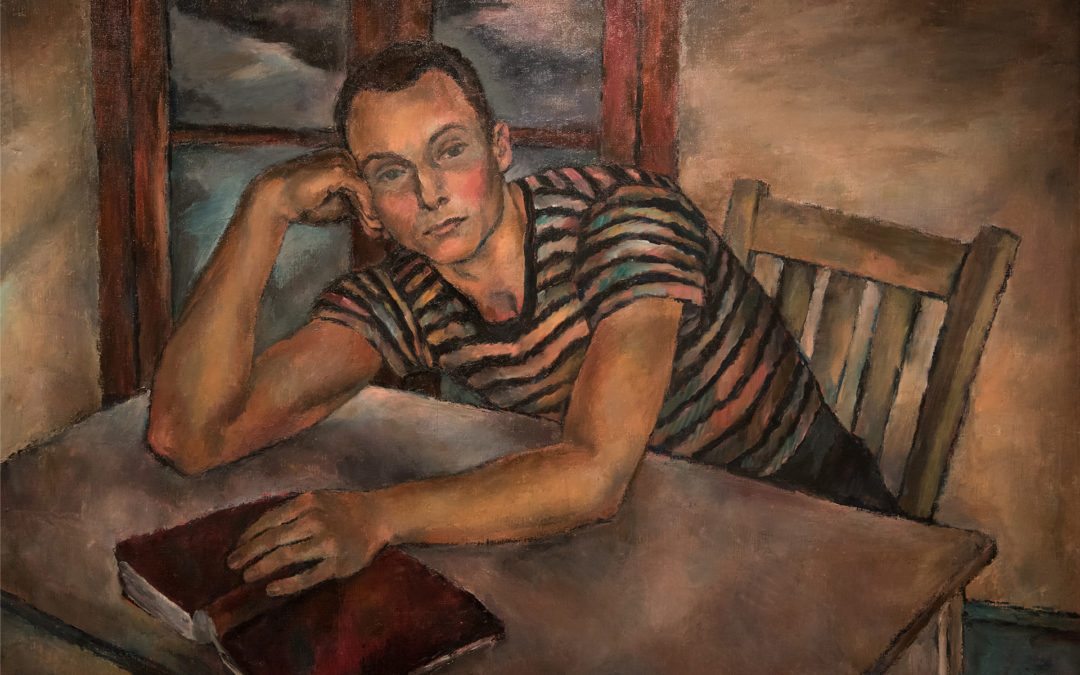“She was a small, round, plump little lady with the dynamism of a rocket, and we were all terrified of her, terrified of her tongue and in a way, terrified of her dream”.
– Martha Graham
Nellie Centennial Cornish (1876-1956)
Just as her middle name celebrated the 100th anniversary of the founding of the United States, Cascadia Art Museum pays tribute to the 100th anniversary of the school that she founded and which bears her name, The Cornish College of the Arts.
“Miss Aunt Nellie” as she was affectionately known, was arguably the most important figure in Washington State’s cultural history.
Initially trained as a pianist and in music education, Cornish taught privately in her own studio and at the University of Washington before founding the Cornish School in 1914. She brought some of the finest artists in the world to perform or teach at Cornish, initiating the cross-disciplinary and collaborative elements that have survived to this day.
We are presenting highlights from Nellie Cornish’s legacy whose broad international reach influenced the fields of Dance, Music, Visual Arts and Performance.
Being the first large-scale tribute to Ms. Cornish and the Cornish College of the Arts, our exhibition tells the story of the early years of Cornish through paintings, prints, sculpture, photography and video.
Drawing from several important sources, including Cornish’s own archive, the exhibition features materials that have never been seen by the public.
From the estate of Mary Ann Wells, founder of the dance department in 1916, we are displaying photographs and related materials that reflect the early dance origins of the school, resulting in significant critical acclaim for both students and faculty. Wells was the most important proponant of modern dance in the region and her influence extended internationally through her most noted pupil, Robert Joffrey who attended Cornish in the mid- 1940’s. Several prominent dance instructors who became icons of modern dance also taught at the school including Adolph Bolm, Michio Ito, and Martha Graham. Key visual artists associated with the early years include photographer Wayne Albee who documented most of the school’s productions through his internationally renowned pictorialist photography. Visual artist Mark Tobey was an important figure in the early years of the school. Some of his artwork includes portraits of faculty as well as a series of stage and costume designs recently uncovered through the estate of drama department figures, Burton and Florence Bean James. Tobey himself performed in several dramatic plays at the school as seen through vintage production photographs by Albee. Tobey also created four large nude contour drawings of students in Martha Graham’s classes at Cornish in 1933.
Works by other well-known visual artists who taught or studied at Cornish include painters Louise Crow, James Edward Peck, Frank Okada as well as two rare watercolors by WWII combat artist and Cornish faculty member, Mitchell Jamieson on loan from the U.S. Navy Collection.
In the early years, puppetry was a very popular medium for artistic performance throughout the world and especially at Cornish. Student and later faculty member
R. Bruce Inverarity, produced a Surrealist Sci-fi puppet production titled “Z-739” performed in the late 1920’s. The original puppets, made from found objects have been recently located by the Northwest Puppet Center and are being displayed publicly for the first time along with two puppets by the region’s beloved iconoclast, Helmi Juvonen.
Artist Ebba Rapp founded the sculpture department at Cornish in the mid-1930’s and worked with Walter Reese to bring printmaking into the art department as well. Two of Rapp’s large-scale oil paintings of the late 1930’s utilized two students from the dance department as models who would later become important figures in modern dance; Syvilla Fort and Merce Cunningham.
During research for the exhibition, a treasure trove of materials from the estate of dancer Karen Irvin came to light. The most important being a number of filmed performances by the Cornish Ballet dating from the 1950’s and 60’s. Irvin and her partner Mea Hartman along with artist Malcolm Roberts were the driving forces of mid-century dance at Cornish. Irvin was choreographer while Hartman and Roberts created stage sets, costumes and posters for the productions for over a decade. The films have been digitized by the University of Washington’s Special Collections and are playing continuously during the run of the exhibition.
The exhibition closes with an important painting by recent Cornish alumna, Aleah Chapin. The work entitled “Auntie” won the distinguished BP Portrait Award in 2012 at the National Portrait Gallery in London. Chapin is the first female American artist to win the prestigious award. This is the first time the painting has been shown in the Northwest.
January 14, 2016 – May 1, 2016


